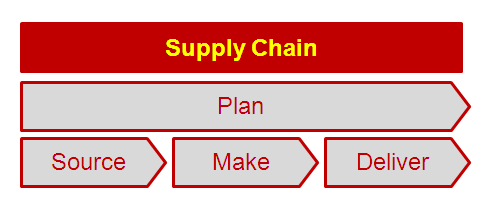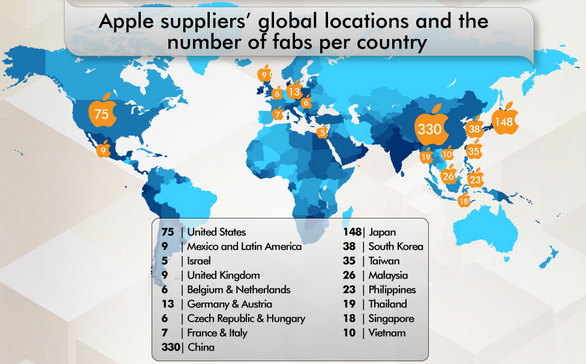Supply chain seems boring
To most people, the phrase “supply chain” creates little excitement. To the chagrin of operational consultants everywhere, it probably ranks close to the bottom on the list of sexy MBA topics – somewhere close to the mundane topics of corporate governance or airline operating leases. MBAs would be embarrassed to admit that it all seems pretty “blue collar”. It unfairly carries the weight of large shipping containers and the image of a dirty manufacturing floor.
I disagree. . .
1) Supply chain is where the work gets done
For any company that makes a physical product, the “bread-and-butter” business is product development, manufacturing, and distribution. It’s a simple formula of building products and selling them to customers. For most companies, the headcount and jobs are in manufacturing and distribution.
2) Supply chain is the real world
Unlike the realm of strategy or marketing, supply chain decisions have immediate and visible impact. When things go wrong, it is fairly obvious. Product launches get delayed. Stores run out of product. Products get recalled. Excess inventory starts piling up. Trucks take product to the wrong locations. Products get diverted to the black market. People get sick from contamination.
Fast forward 2021. The entire world was gripped by supply chain bottlenecks, stock-outs, and even the blocking of the Suez Canal. Fascinating podcast from a16z about the need to bring digital to international trade here.
3) Supply chain is long-term
It’s hard to overstate how broadly you need to think about supply chain. It can take years for a company to build manufacturing capacity or create a network of distribution centers. For the supply chain strategist, it is broad and integrated thinking at its finest. At a high-enough level, it links closely with both strategy and M&A activities. It is not for the unorganized, provincial, or close-minded thinker.
4) Supply chain is cradle-to-grave
Too often, people think of supply chain as if it were just logistics – plane, boats, trucks and trains. It’s much more than that. The SCOR model from the Supply Chain Council is a widely accepted and good way to think about it:
- PLAN: Determining what to make (quantity, type, color, size, timing, location etc)
- SOURCE: Identifying the suppliers and getting the necessary inputs for production
- MAKE: Producing the product at a sufficient quality to meet the customer’s need
- DELIVER: Transporting the product on-time at minimum cost to the customer

5) Supply chain is global
This is such a commonly accepted fact that it requires almost no argument. In 1999, Thomas Friedman described it beautifully in The Lexus and the Olive Tree where markets have an almost magical way of matching up countries, companies and customers. In a more current example, the map below shows that Apple’s suppliers make their iPhone parts in more than 17 different countries. To see the full extent of Apple’s global supply chain look here.

6) Supply chain requires partnerships
The big idea in supply chain is coordination. What is the best way to marry up the activities of your suppliers, your company, and your customers? What are the contracts and incentive to make sure this happens?
As the name implies, it is a chain of events, materials, resources and information. One groups supplies the other, until it makes its way to the customer. In 1987, Proctor and Gamble started to actively manage its inventory on Walmart’s shelves. Now, when stock of 50 oz Tide HE laundry detergent gets low at Walmart store #4288 outside of Denver, Colorado, USA, P&G knows immediately and will plan to replenish at the next shipment.

7) Supply chain has great stories
Reading through history, you can’t help but see the powerful economic forces – that compelled explorers, tradesmen, and conquers to seek out new lands – that we now call supply chain. Clearly, Fortune 500 VPs of global supply chain aren’t sailing the oceans in wooden boats, but the drive to find new suppliers, products and markets is the same. I recently read a two books by Mark Kurlansky Cod: A Biography of a Fish that Changed the World, and Salt: A World History that read like supply chain books. Plan. Source. Make. Deliver.
Planet Money T-Shirt
My wife’s favorite podcast is Planet Money. They do a great job of breaking down economics and finance into fun vignettes. They recently had a project to make t-shirts, and followed the entire product from design, to cotton, to yarn, to production, to shipment. Namely, they followed the entire supply chain. Take a listen here.
8) Supply chain is about the numbers
Other than finance and accounting, there is nothing that is more measurable than supply chain. Large software packages like SAP, Manhattan Associates, I2 / Red Prairie (now JDA), and JD Edwards (now Oracle), etc pride themselves on the real-time data capture and tracking of metrics.
9) Supply chain is complex
As complex and global as supply chains have gotten, fundamentally, it is about getting the things to the customer reliably, quickly, at a low cost. It is a series of trade-offs that need to be constantly re-evaluated. It’s a huge optimization problem where you weigh the pros / cons of different decisions. Yes, AND.
- Yes, it makes sense to give all our orders to one vendor to lower the per-piece manufacturing cost, AND what happens if there is a flood in that area?
- Yes, it makes sense to offer free 2 days shipping, AND what about our margins?
- Yes, we should allow the customer to customize their order, AND how much will that delay the production line?
10) Supply chain is $$
No surprise that companies need help with their supply chain from outside vendors. Consultants, accountants, lawyers, software vendors all benefit from business when companies go global, launch new products, outsource, insource, run into problems, create new supplier relationships, merge distribution channels, deal with foreign regulatory issues, and generally, try to stay in business.
“Everything besides Finance and HR is supply chain.”
As ambitious and arrogant as that sounds, it is somewhat true. Delivering products and services takes enormous coordination of product development teams, suppliers, manufacturers, truckers, freight forwarders, and distributors. It’s a feat of nature that most every product you buy has traveled thousands of miles and touched dozens of hands to get to you
Reference:
For those interested in getting some certification on supply chain, I recommend the CSCP. It is only 1 exam, probably 20-30 hours of study. Not difficult, and informative. Deals more with strategy and higher-level concepts.
I advise against the CPIM certification. It is a series of 5 exams and is more tactical than what most people need. Sadly, my wife and I discovered that after going through all five exams. Not sure if she will forgive me for those 6 months of studying.
P.S. From a friend who is an expert in supply chain, he made some great points:
“One thing – why not include “return” on the SCOR model? One way that I have seen folks incorporate it in the “deliver” bubble is by calling it “move”, that way it’s bi-directional. The other thing I like to do with the supply chain images is make them more network looking, rather than linear.”
Many thanks GM.

I am just starting out my career in SCM and happened across your article. I really enjoyed reading this a lot. Thank you.
Thanks Caleb. Made my day to know that. Keep trucking. . .
Here’s the updated link for the Planet Money T-shirt project.
https://apps.npr.org/tshirt/#/title
Awesome. Thanks, need to get one.